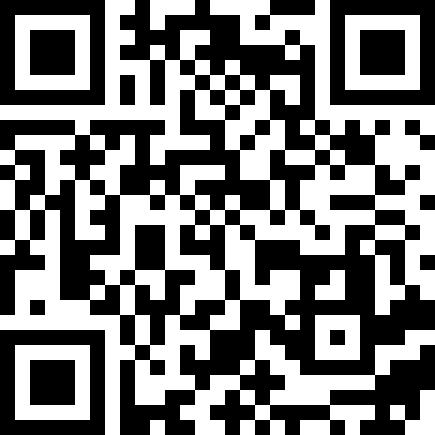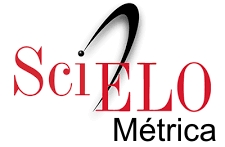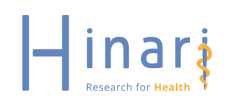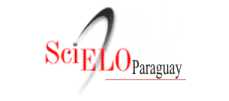Proteinuria asociada al dengue
Resumen
Objetivos: describir el grado de proteinuria y albuminemia en pacientes con dengue, correlacionar la proteinuria con la fuga capilar medida por el nivel de hemoconcentración de la hemoglobina y hematocrito.
Metodología: diseño observacional, descriptivo, prospectivo, de corte transversal. Población de estudio: varones y mujeres, mayores de edad, portadores de dengue, internados en el Dpto. de Medicina Interna entre diciembre 2012 y mayo 2013. Criterios de inclusión: dengue grave con signos de alarma, confirmado por antígeno NS1 y/o IgM positivo, en periodo crítico o postfebril. Criterios de exclusión: portadores de afecciones renales conocidas. Muestreo no probabilístico de casos consecutivos. Variables: datos demográficos, hemograma, proteinuria de 24 hs, albuminemia.
Resultados: ingresaron al estudio 26 varones con edad media 42±21 años y 28 mujeres con edad media 41±21 años. Se detectó proteinuria en 43 sujetos (79,6%). La misma se hallaba en rango nefrótico (media 3184±916 mg/24 hs) en 8 casos (14,8%) y dentro de valores elevados (media 669±494 mg/24 hs) en 35 casos (64,8%). La albuminemia en los sujetos con rango nefrótico fue 3±0,7 mg/dL, en los que tenían valores elevados de proteinuria fue 2,9±0,4 mg/dL y en los sujetos sin proteinuria fue 2,6±0,4 mg/dL (p 0,09 prueba ANOVA). La correlación entre proteinuria y grado de hemoconcentración de hemoglobina fue -0,01 y con el grado de hemoconcentración del hematocrito fue -0,04.
Conclusiones: el dengue produjo proteinuria en 79,6% de los pacientes, llegando a rango nefrótico en 14,8%. La proteinuria no se asoció con el grado de hemoconcentración de la hemoglobina ni del hematocrito, parámetros utilizados como indicadores de gravedad de la fuga capilar. Se recomienda agregar el dosaje de proteínas en orina de 24 hs al protocolo de tratamiento del dengue y el seguimiento prospectivo de los afectados con rango nefrótico.
Citas
2. MSP y BS. Dengue. Guía de Manejo Clínico 2012. Disponible en http://www.mspbs.gov.py. Visitado 9 febrero 2013
3. Hanh Tien NT, Lam PK, Duyen HT, Ngoc TV, Ha PT, Kieu NT, Simmons C, Wolbers M, Wills B. Assessment of microalbuminuria for early diagnosis and risk prediction in dengue infections. PLoS One. 2013;8(1):e54538.
4. Wang SM, Sekaran SD. Evaluation of a commercial SD dengue virus NS1 antigen capture enzyme-linked immunosorbent assay kit for early diagnosis of dengue virus infection. J Clin Microbiol. 2010 Aug;48(8):2793-7
5. Bisordi I, Rocco IM, Suzuki A, Katz G, Silveira VR, Maeda AY et al. Evaluation of dengue NS1 antigen detection for diagnosis in public health laboratories, São Paulo State, 2009. Rev Inst Med Trop Sao Paulo. 2011 Nov-Dec;53(6):315-20.
6. Pan-Ngum W, Blacksell SD, Lubell Y, Pukrittayakamee S, Bailey MS, de Silva HJ et al. Estimating the true accuracy of diagnostic tests for dengue infection using bayesian latent class models. PLoS One. 2013;8(1):e50765.
7. Fry SR, Meyer M, Semple MG, Simmons CP, Sekaran SD, Huang JX, McElnea C et al. The diagnostic sensitivity of dengue rapid test assays is significantly enhanced by using a combined antigen and antibody testing approach. PLoS Negl Trop Dis. 2011 Jun;5(6):e1199.
8. Gowri Sankar S, Dhananjeyan KJ, Paramasivan R, Thenmozhi V, Tyagi BK, John Vennison S. Evaluation and use of NS1 IgM antibody detection for acute dengue virus diagnosis: report from an outbreak investigation. Clin Microbiol Infect. 2012 Jan;18(1):E8-10.
9. Basu A, Chaturvedi UC. Vascular endothelium: the battlefield of dengue viruses. FEMS Immunol Med Microbiol. 2008 Aug;53(3):287-99.
10. Lin CF, Wan SW, Cheng HJ, Lei HY, Lin YS. Autoimmune pathogenesis in dengue virus infection. Viral Immunol. 2006 Summer;19(2):127-32.
11. Vasanwala FF, Puvanendran R, Fook-Chong S, Ng JM, Suhail SM, Lee KH. Could peak proteinuria determine whether patient with dengue fever develop dengue hemorrhagic/dengue shock syndrome?--a prospective cohort study. BMC Infect Dis. 2011 Aug 5;11:212.
12. Wills BA, Oragui EE, Dung NM, Loan HT, Chau NV, Farrar JJ, Levin M. Size and charge characteristics of the protein leak in dengue shock syndrome. J Infect Dis. 2004 Aug 15;190(4):810-8.
13. Vasanwala FF, Puvanendran R, Ng JM, Suhail SM. Two cases of self-limiting nephropathies secondary to dengue haemorrhagic fever. Singapore Med J. 2009 Jul;50(7):e253-5.
14. Acharya S, Shukla S, Mahajan SN, Diwan SK. Acute dengue myositis with rhabdomyolysis and acute renal failure. Ann Indian Acad Neurol. 2010 Jul;13(3):221-2.
15. Sung JM, Lee CK, Wu-Hsieh BA. Intrahepatic infiltrating NK and CD8 T cells cause liver cell death in different phases of dengue virus infection. PLoS One. 2012;7(9):e46292.
16. Kaushik JS, Gupta P, Rajpal S, Bhatt S. Spontaneous resolution of sinoatrial exit block and atrioventricular dissociation in a child with dengue fever. Singapore Med J. 2010 Sep;51(9):e146-8.
17. Verma R, Sharma P, Garg RK, Atam V, Singh MK, Mehrotra HS. Neurological complications of dengue fever: Experience from a tertiary center of north India. Ann Indian Acad Neurol. 2011 Oct;14(4):272-8.
18. Sangle SA, Dasgupta A, Ratnalikar SD, Kulkarni RV. Dengue myositis and myocarditis. Neurol India. 2010 Jul-Aug;58(4):598-9.
19. Lim M, Goh HK. Rhabdomyolysis following dengue virus infection. Singapore Med J 2005;46:645-6.
20. Muzaffar J, Venkata Krishnan P, Gupta N, Kar P. Dengue encephalitis: why we need to identify this entity in a dengue-prone region. Singapore Med J. 2006 Nov;47(11):975-7.
21. Malavige GN, Huang LC, Salimi M, Gomes L, Jayaratne SD, Ogg GS. Cellular and cytokine correlates of severe dengue infection. PLoS One. 2012;7(11):e50387.
22. Simmons CP, Wolbers M, Nguyen MN, Whitehorn J, Shi PY, Young P, Petric R, Nguyen VV, Farrar J, Wills B. Therapeutics for dengue: recommendations for design and conduct of early-phase clinical trials. PLoS Negl Trop Dis. 2012;6(9):e1752.
23. Halstead SB. Dengue: the syndromic basis to pathogenesis research. Inutility of the 2009 WHO case definition. Am J Trop Med Hyg. 2013 Feb;88(2):212-5.
24. Thein TL, Gan VC, Lye DC, Yung CF, Leo YS. Utilities and limitations of the World Health Organization 2009 warning signs for adult dengue severity. PLoS Negl Trop Dis. 2013;7(1):e2023.
25. Souza LJ, Boulos M. Clinical experience in dengue: experience of specialized service. Rev Inst Med Trop Sao Paulo. 2012 Oct;54 Suppl 18:S7-9.
26. Malavige GN, Huang LC, Salimi M, Gomes L, Jayaratne SD, Ogg GS. Cellular and cytokine correlates of severe dengue infection. PLoS One. 2012;7(11):e50387.
27. Patkar C, Giaya K, Libraty DH. Dengue virus type 2 modulates endothelial barrier function through CD73. Am J Trop Med Hyg. 2013 Jan;88(1):89-94
28. Hutspardol S, Prommalikit O, Upiya N, Chataroopwijit J, Khemakanok K, Assadamongkol K. Heavy proteinuria following dengue hemorrhagic fever. Southeast Asian J Trop Med Public Health. 2011 May;42(3):579-82.
29. Lumpaopong A, Kaewplang P, Watanaveeradej V, Thirakhupt P, Chamnanvanakij S, Srisuwan K, Pongwilairat N, Chulamokha Y. Electrolyte disturbances and abnormal urine analysis in children with dengue infection. Southeast Asian J Trop Med Public Health. 2010 Jan;41(1):72-6.

















